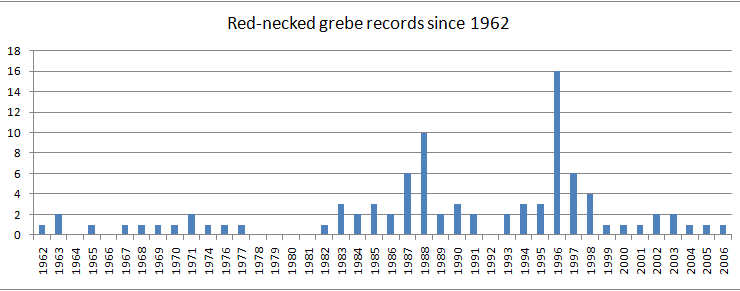Red-necked Grebe - 2000 onwards
 Tuesday, March 6, 2018 at 12:33PM
Tuesday, March 6, 2018 at 12:33PM Podiceps grisgena - Uncommon winter visitor
2000 - One Strumble Hd 8 Nov (CB, GHR et al).
2001 - One Strumble Hd 31 Oct (CB, PM, GHR)
2003 - Singles Strumble Hd 24 Sept (CB, GHR) and Bosherston 11 & 12 Nov (DJa et al).
2004 - One Fishguard Harb 9-28 Dec (AR et al).
2005 - One Teifi Estuary 12 Feb - 14 Mar (JG PN)
2006 - One Angle Bay 26 – 31 Dec (PRH et al).
2007 - All records came from two sites. 2 were at Angle Bay on 6 Jan, a single there on 18 Jan, 4 Feb and 2nd Mar (CH et al). A single passed Strumble Head on 17 Oct (GHR)
2008 - Only two records this year, both of singles: at Angle Bay on 26 Jan - 6 March (CH et al); and at Carew Millpond 15 Dec to end of year (DGI et al)
2011 - A single bird at Cwm Yr Eglwys from 5th Jan to 1st Feb (SEB) and another at Gann/Dale Roads from 29th Jan until 13th Mar (DJA).
2015 - Single birds at Amroth on 5th Jan and at Angle Bay from 8th - 17th Jan were the only records for the year.
2016 - A single bird at Westfield Pill from 3rd to 12th Nov was the only record received.
Records extracted from the Pembrokeshire Bird Reports
This species has been added to WRP Description list as of 1st Jan. 2017.
 Pembrokeshire Avifauna committee | Comments Off |
Pembrokeshire Avifauna committee | Comments Off |  scarce in
scarce in  Red-necked Grebe
Red-necked Grebe 



